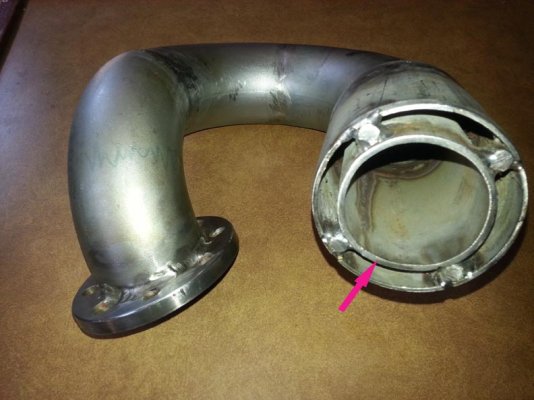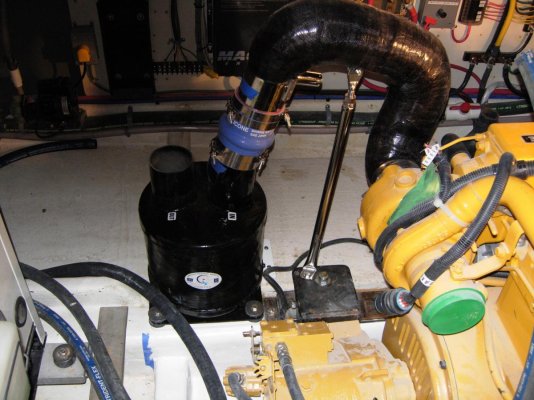Shoalwaters
Guru
- Joined
- Feb 24, 2008
- Messages
- 681
- Location
- St. Lucia, West Indies
- Vessel Name
- "Dragon Lady"
- Vessel Make
- DeFever 41
The exhaust mixers (pic 1) on my Yanmar 4LH-DTE's left much to be desired. The seawater injection point was very close to the turbo and (in my case) external water level was/is, within 5" of turbo level.
Some online homework, including Boatdiesel, left me in no doubt that the hot part of an exhaust tract should go up and over before sea-water is injected - unlike the Yanmar elbow. Funds were limited, so pics 2, 3 and 4 are what I came up with. The water injection port is partially hidden by the down pipe in the seconds pic.
I seem to have got the mixer right because I can confortably put my hand on the exposed bit (just above the blue hump-hose) when the engines are pushing.
The hot risers got two layers of header-wrap as overhead clearance is minimal. It's applied wet and the blue dye-stuff gets everywhere! Can you spell wode!
The welded components are Sch #10 stainless pipe, elbows, end caps and flanges ordered from McMaster-Carr. The majority is 3" and the cost for both engines was around $350.00, TIG welding around the same again and the Trident elbows etc around $500.00.
I am a worrier, so water-flow and exhaust temperature alarms are on order from Aqualarm.
Some online homework, including Boatdiesel, left me in no doubt that the hot part of an exhaust tract should go up and over before sea-water is injected - unlike the Yanmar elbow. Funds were limited, so pics 2, 3 and 4 are what I came up with. The water injection port is partially hidden by the down pipe in the seconds pic.
I seem to have got the mixer right because I can confortably put my hand on the exposed bit (just above the blue hump-hose) when the engines are pushing.
The hot risers got two layers of header-wrap as overhead clearance is minimal. It's applied wet and the blue dye-stuff gets everywhere! Can you spell wode!
The welded components are Sch #10 stainless pipe, elbows, end caps and flanges ordered from McMaster-Carr. The majority is 3" and the cost for both engines was around $350.00, TIG welding around the same again and the Trident elbows etc around $500.00.
I am a worrier, so water-flow and exhaust temperature alarms are on order from Aqualarm.
Attachments
Last edited:







